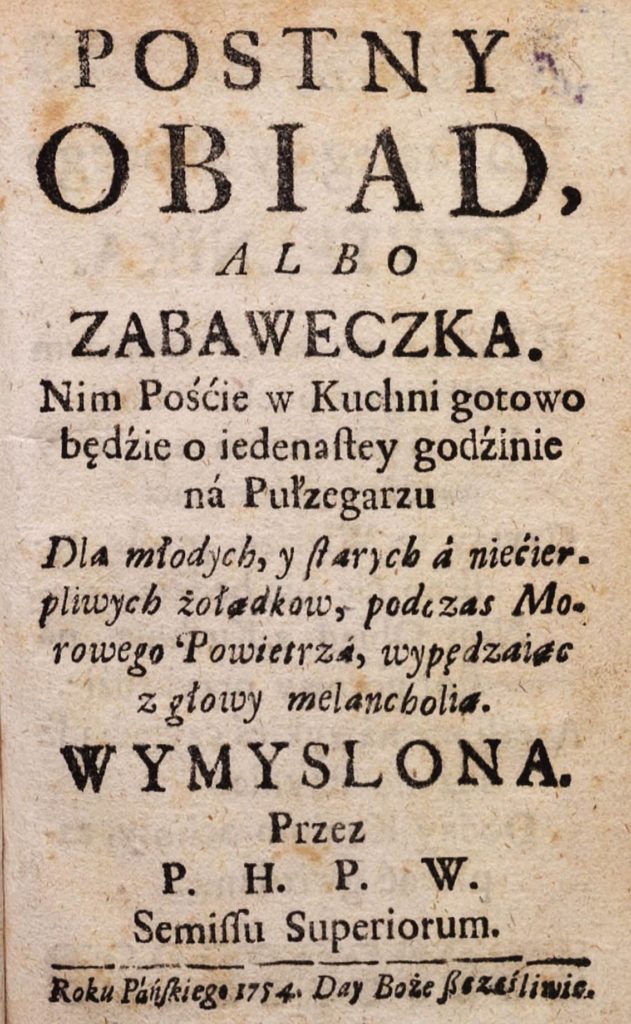Wigilijna Kapusta z Grzybami
Kapusta: Polish Sauerkraut with Mushrooms
How to pronounce it?
capoostah sgzhe-bumee
‘Play’ to hear:
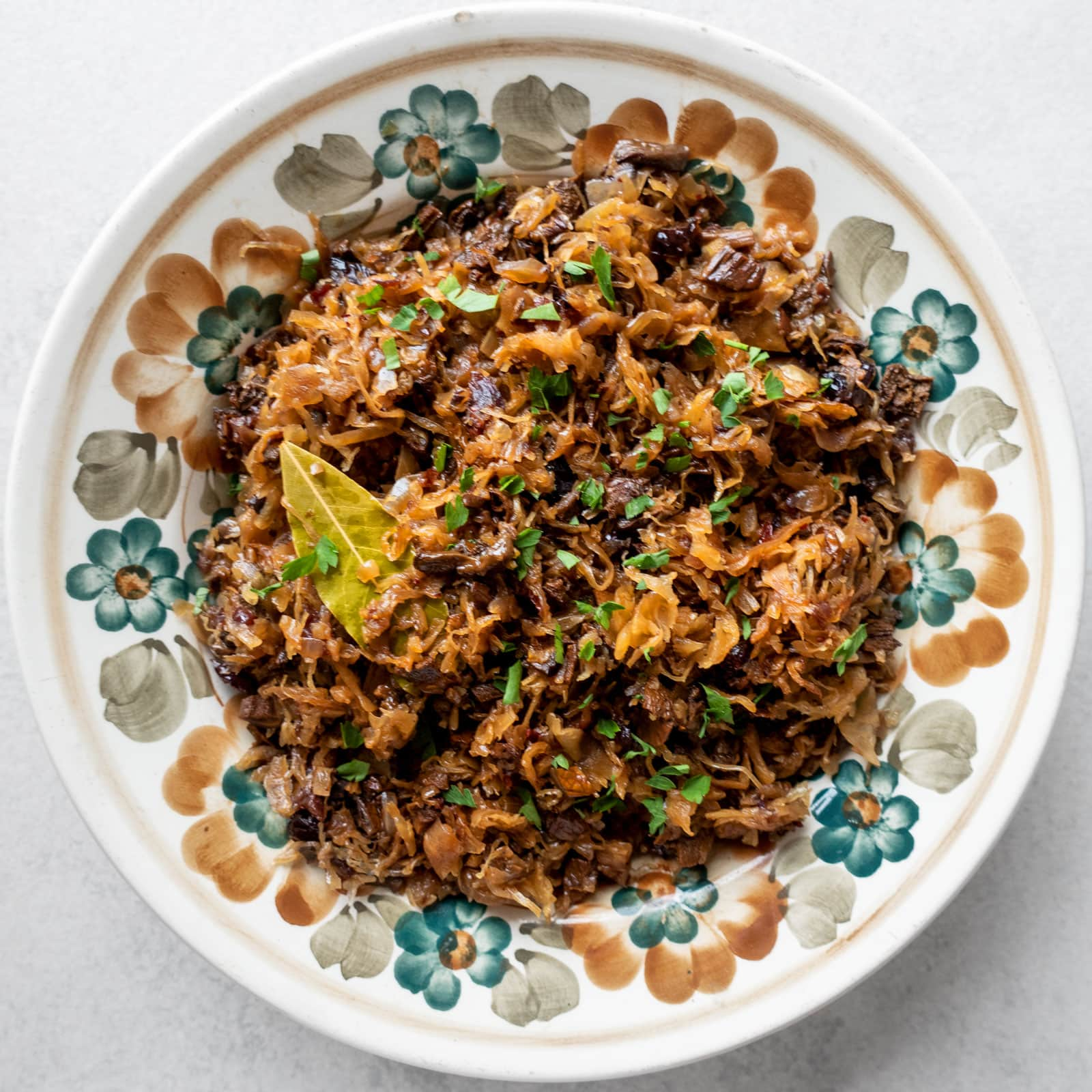
If you love sticking with tradition, you can’t go wrong with this Polish-style Sauerkraut with Mushrooms. In Poland, we call it “Kapusta z grzybami” – but among Polish diaspora, it’s simply known as “Kapusta”, simply meaning “cabbage”.
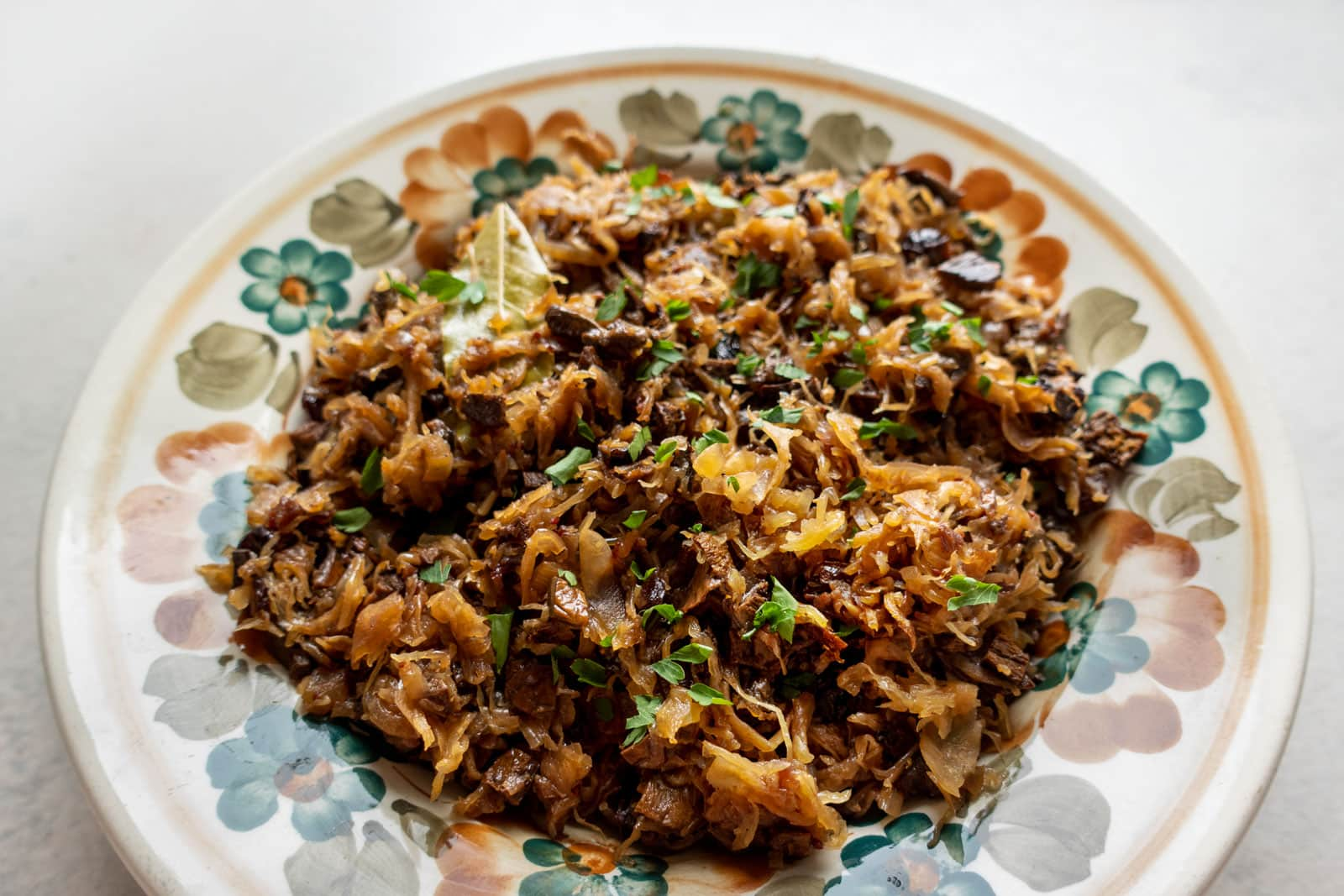
Most popular around the festive season, this vegan-friendly side dish has tons of flavour. Sauerkraut lends its acidity, while wild mushrooms add their umami and a pleasant earthiness. A touch of honey and dried fruit balances everything with some sweetness.
Use the same recipe as a filling for other traditional dishes such as Krokiety croquettes, Uszka dumplings, Paszteciki pasties and more.
For the full list of ingredients & detailed instructions, please see the recipe card at the end of this post. But before you scroll, there’s important stuff to know below.
In the old-Polish cuisine, combining crops with foraged ingredients was very common. Wild mushrooms were a popular addition to soups, stews and other dishes.
‘Kapusta z grzybami’ was mentioned in the mid-17th century by Hiacynt Przetocki, the poet, priest and author of “Postny Obiad albo Zabaweczka” (“Lenten Lunch or a Trifle”, source, loose translation mine):
“A Lithuanian delicacy perhaps, cabbage with mushrooms is,
In Vilnius, serve it among other platters,
Cause in Poland (so many) mushrooms in the forests, cabbage in the gardens,
A single pot won’t be enough.”
Not much has changed since then – ‘Kapusta z grzybami’ still appears on our tables to this day.
Do you need any special ingredients or equipment to make this ‘Kapusta z Grzybami’?
Yes, you’ll need to shop around for this recipe.
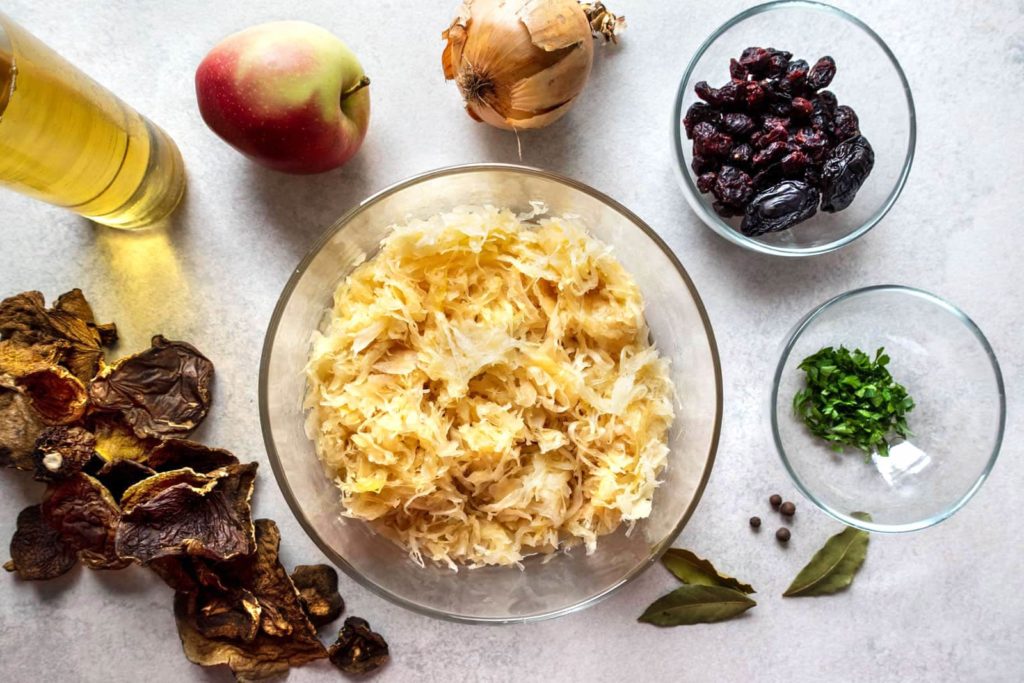
Sauerkraut: First of all, you’ll need a pound (450-500 g) of high-quality sauerkraut (definitely not canned!). Double-check the list of ingredients – all we want there is cabbage, salt, spices and water. Avoid products containing vinegar, we need a naturally lacto-fermented product.
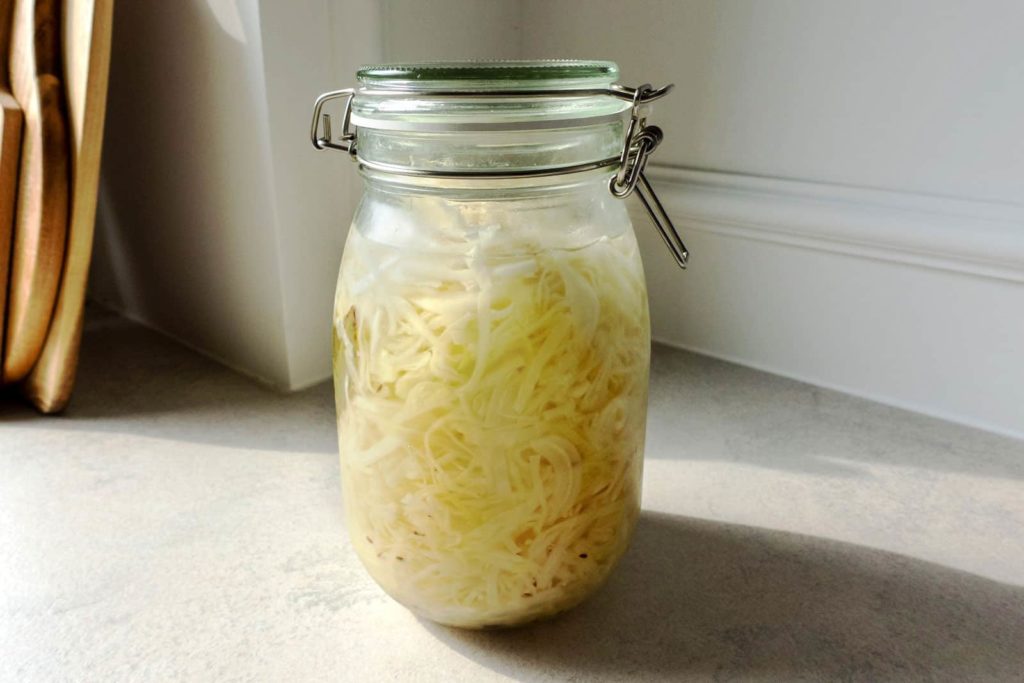
In Poland, any major store carries pretty decent sauerkraut. From my experience, local produce stalls and farmer’s markets have the best quality. If there’s a sample available, have a taste. If the flavour is vinegar-like – skip it.
Internationally, it’s worth enquiring at Polish and Eastern European delis, as well as your local farmer’s markets. You could also ferment it at home, it’s surprisingly easy.
Mushrooms: Traditionally, we use wild mushrooms for this recipe, either fresh, frozen or (most often) dried. In Poland, many of us are keen mushroom foragers, therefore we can rely on our own supplies. Wild mushrooms are available in stores, but they aren’t cheap.
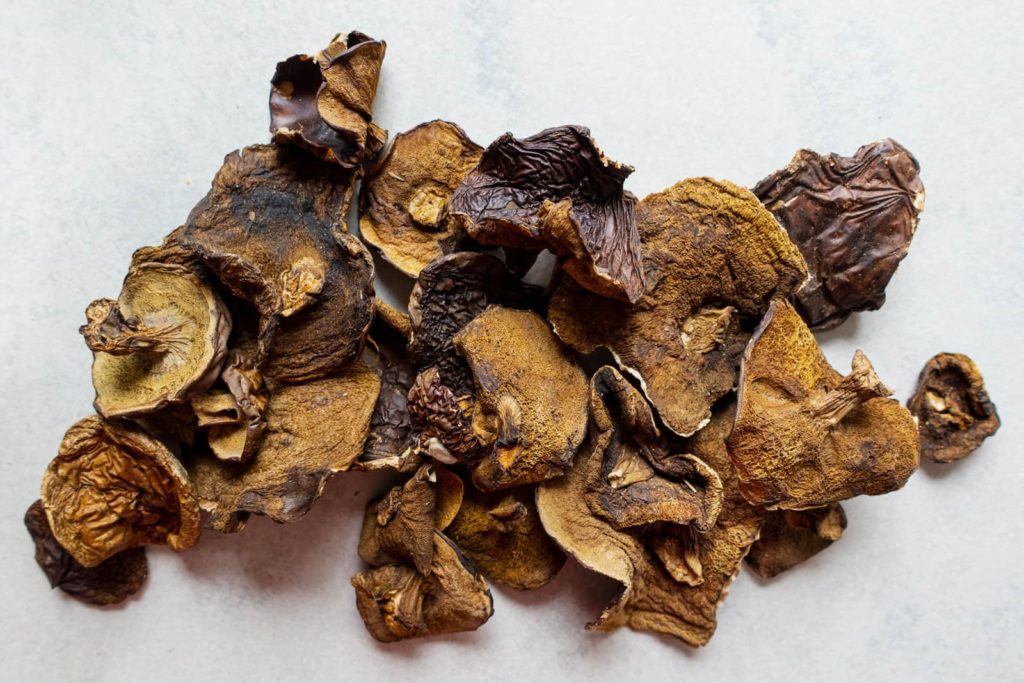
Internationally, you’ll be able to find dried wild mushrooms online (like this mix on Amazon), but you could also use the regular button mushrooms instead. The aroma won’t be as strong, but they are a decent (and much cheaper) alternative.
Equipment-wise, you’ll need a wide & deep frying pan (or a heavy-bottomed cooking pot) WITH a lid.
How should you serve this sauerkraut & mushroom dish?
This recipe can be served in many ways:
- As a main dish, with a few slices of fresh bread on the side
- As a side dish, accompanying meat or fish-based dishes
- As a filling – for Pierogi, Krokiety (Polish-style breaded croquettes), Paszteciki (pasties), Uszka dumplings, Kulebiak (Coulibiac) and Gołąbki (Cabbage Rolls).
- As a pasta topping, for example for Łazanki (Polish pasta, similar to the Italian Quadrettini)
What should you serve with ‘Kapusta z grzybami’?
This dish is served on Christmas Eve (Polish: ‘Wigilia’), among other Polish festive dishes. You would find it next to ‘Ryba po Grecku’, pickled herring and a bowl of vegetable salad.
Can you make this ‘kapusta’ another way?
This is a traditional way to cook this dish. You can skip cranberries or prunes completely if you’re not a fan of dried fruit.
If you’re a fan of Polish sausage, try this Kiełbasa and Sauerkraut recipe next time.
What diets is this dish suitable for?
The recipe follows the rules of the old-Polish fast and therefore is fully vegan. It is also gluten-free.
You could make it low-carb and keto-friendly as well, just skip the apple and dried fruit.
How long can you keep this ‘kapusta’ dish in the fridge?
Once you serve it, don’t leave it out at room temperature for longer than 4-5 hours.
To store any leftovers, move them into a container with a lid and chill. A regular glass jar works really well here. Refrigerate for up to a week.
Can I freeze this sauerkraut with mushrooms?
Yes, this recipe freezes well.
Freeze it as soon as it’s cool enough to do so. Pour it into a freezer-friendly container with a lid, or in a zip-lock bag. Label it well with a description and write down the date. Consume within 6 months.
How do I reheat this dish?
From chilled: You can reheat it on the stove. Set the pot on medium heat and stir occasionally. If you feel that the dish has become too thick, add a little bit of water. Bring to a near boil, then reduce the heat to a minimum and cook for a further 15 minutes.
From frozen: Move the dish from the freezer into the refrigerator and thaw overnight. Then reheat on the stove according to the instructions above.
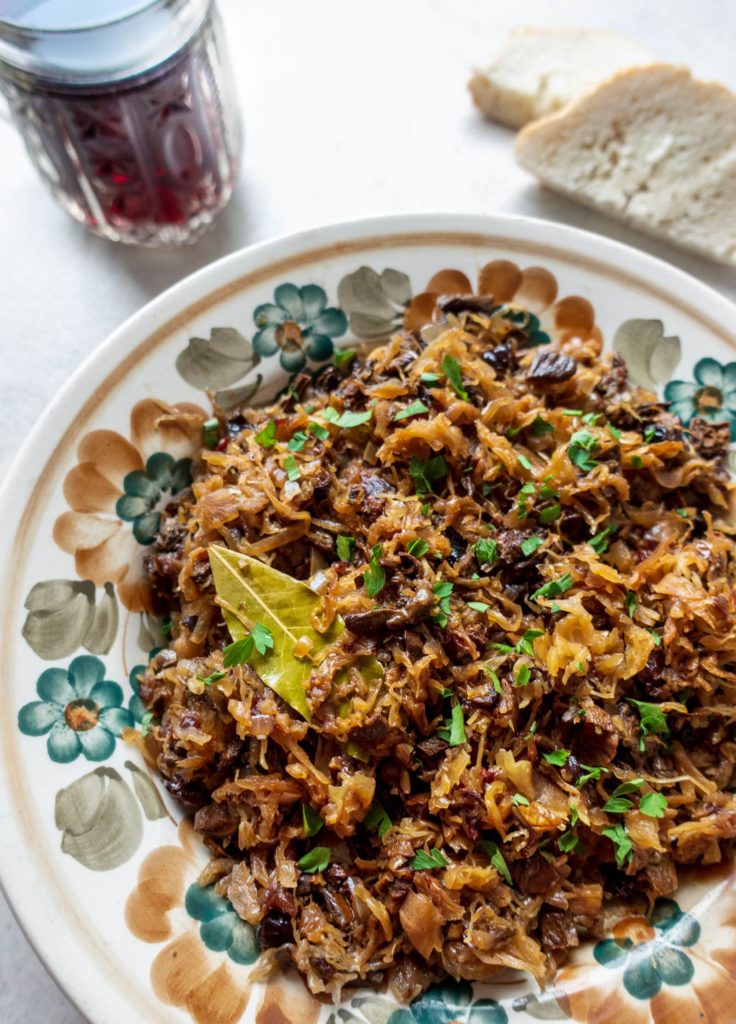
Kapusta z Grzybami: Polish Sauerkraut with Wild Mushrooms
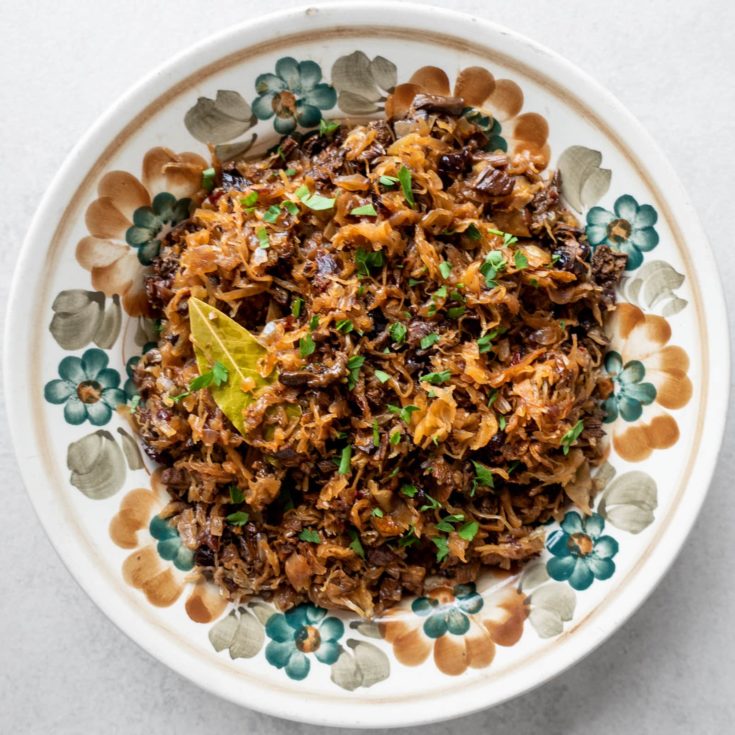
Ingredients
- 2 oz (55 g) dried wild mushrooms; can replace with 9 oz (250 g) fresh or frozen wild mushrooms, or regular button mushrooms
- 1 lb (450-500 g) sauerkraut
- 1 medium onion (5 oz, 140 g)
- 1 small apple, tart kind (5 oz, 140 g)
- 2 tablespoon linseed or olive oil
- 1.5 cup (375 ml) vegetable stock; can replace with white wine or water
- 3 oz (85 g) dried cranberries or prunes, chopped; optional
- 1 tablespoon parsley leaves, chopped
Spices:
- pinch of black pepper, ground
- 1/2 tablespoon caraway, ground or in seeds
- 3-4 allspice berries
- 3-4 bay leaves
- 1 tablespoon soy or Worcestershire sauce
- 1/2 teaspoon honey
Instructions
The night before
- [if using frozen mushrooms] Thaw the mushrooms, ideally overnight. Cut them into fine pieces.
- [if using dried mushrooms] Place the mushrooms in a bowl, cover with hot water and soak for at least 3 hours, ideally overnight. Retrieve from the water and chop finely.
Prepping
- [if using fresh mushrooms] Chop the mushrooms finely into small pieces.
- Squeeze the juices out of the sauerkraut and chop it roughly.
- Peel the onion, chop it finely. Peel the apple and grate it using the largest holes of the box grater.
Cooking
- Heat up 2 tablespoons of oil in a deep frying pan. Add in chopped onion and fry it over medium heat until translucent.
- Add in the sauerkraut and spices: a generous pinch of ground pepper, a tablespoon of soy sauce, half a tablespoon of ground caraway, 3-4 allspice berries, 3-4 bay leaves and half a teaspoon of honey. If your sauerkraut isn’t overly salty, add a pinch of salt as well. Stir and fry together for 2-3 minutes.
- Add mushrooms and grated apple, stir it in and fry together for a minute.
- Pour in the stock or wine, and bring to a high heat (any liquid on the pan should start to boil). Add dried cranberries, reduce the heat to medium-low. Cover with a lid and cook for 10 minutes, stirring occasionally.
- Take the lid off and continue cooking for a further 10 minutes, allowing the excess liquid to evaporate. If you see that it’s still watery, continue cooking until you’re happy with the consistency.
- Add chopped parsley, and stir it in. Cook together for a minute or two.
- As you stir, you might want to fish out all of the all-spice berries and bay leaves.
- Serve immediately or leave to cool down and use as a filling for other dishes.
Nutrition Information:
Yield:
8Serving Size:
1Amount Per Serving: Calories: 156Total Fat: 5gSaturated Fat: 2gTrans Fat: 0gUnsaturated Fat: 3gCholesterol: 6mgSodium: 107mgCarbohydrates: 25gFiber: 5gSugar: 12gProtein: 2g
Polonist is reader-supported. When you buy through links on our site, we may earn a small affiliate commission. Learn more
Recipe Information
Filed under:
Alternative traditional/regional names:
Also known / Misspelt internationally as:
Kapusta, Quick Bigos
Tested by:
First published on:
Recipe by / Adapted from:
Story by:
Bibliography / References:
“Postny Obiad albo Zabaweczka” (“Lenten Lunch or a Trifle”) by Hiacynt Przetocki, page 36, scan of the book in Polish
